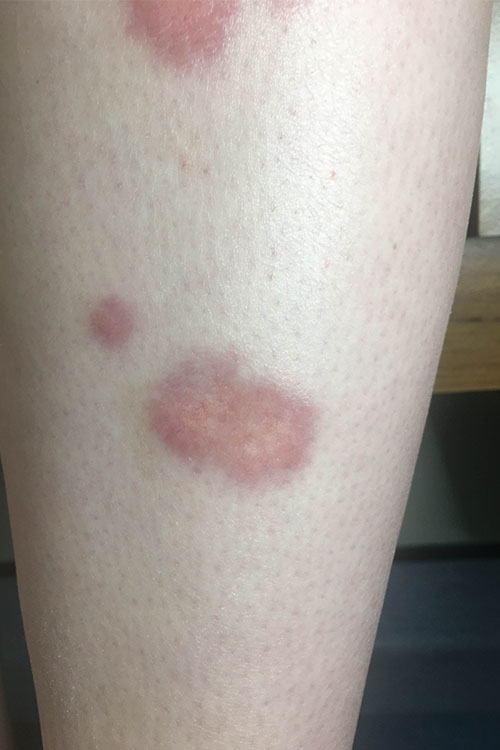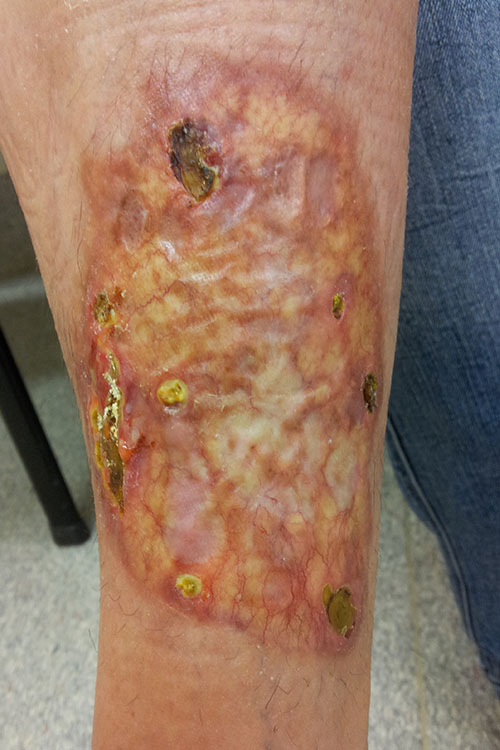Necrobiosis lipoidica
Necrobiosis lipoidica is a rare inflammatory granulomatous skin disorderFeily, 2015. Many patients with necrobiosis lipoidica have type 1 or type 2 diabetes; however, only a minority of patients with diabetes develop necrobiosis lipoidica. Patients with diabetes can develop necrobiosis lipoidica regardless of blood glucose concentrations. Necrobiosis lipoidica can also be associated with other systemic conditions (eg thyroid disease, obesity, hypertension).
Early necrobiosis lipoidica lesions are difficult to diagnose, and require a high index of suspicion in patients with commonly associated conditions. Most early lesions are nonspecific. Lesions usually occur on the lower legs. The lesions are initially red nonulcerating plaques; the centres of the plaques then become brownish-yellow with telangiectasia. Eventual thinning of the epidermis and dermis leads to atrophy, and indolent slow-healing ulcers may form.
For photos of necrobiosis lipoidica, see Necrobiosis lipoidica.
Refer patients with suspected necrobiosis lipoidica to a specialist (eg diabetes specialist, endocrinologist, dermatologist) for diagnosis and management. Treatment is difficult, and may include topical or intralesional corticosteroids. The skin needs to be protected from trauma to prevent breakdown and subsequent ulcer formation. Ulcers can heal but the plaques almost never resolve.


